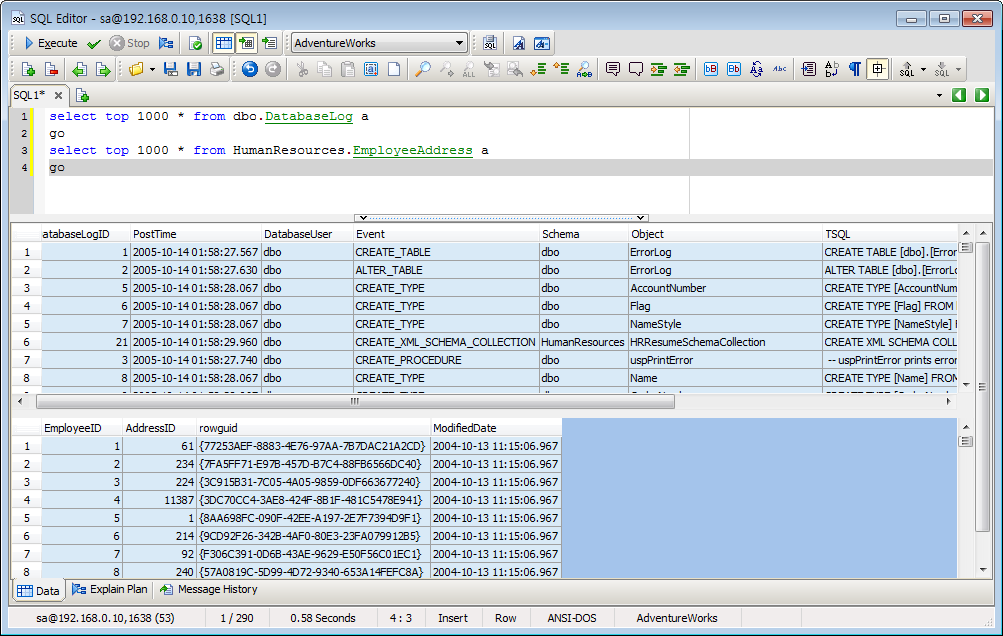

- #Bluecoat reporter default sql server authentication password#
- #Bluecoat reporter default sql server authentication windows#
Restart the report server to clear any sessions that are currently open. If you configured a scale-out deployment, repeat these steps for other report servers in the deployment. Replace empty values for or with values that are valid for your environment. Note that you cannot use Custom with other authentication types. If you are using multiple authentication types, add just the RSWindowsBasic element but do not delete the entries for RSWindowsNegotiate, RSWindowsNTLM, or RSWindowsKerberos. If you are using default values, you can copy the minimum element structure: ĪPPLIES TO: ✔️ SQL Server Reporting Services (2017 and later) ✔️ Power BI Report Server The first XML structure provides placeholders for specifying all of the elements, which are described in the next section:ĪPPLIES TO: ✔️ SQL Server Reporting Services (2016) To find the config file, see the File Location section in the "nfig Configuration File" article.Ĭopy one of the following XML structures that best fits your needs. To configure a report server to use Basic authentication
#Bluecoat reporter default sql server authentication windows#
The report server uses internal features in the default Windows Authentication extension to support report server in SharePoint integrated mode. If the report server is deployed in SharePoint integrated mode, you must use the default authentication settings that specify Windows integrated security. The following instructions are intended for a native mode report server.

The option will be grayed out in the data source property pages. For more information, see Configure TLS Connections on a Native Mode Report Server.Īfter you enable Basic authentication, be aware that users cannot select the Windows integrated security option when setting connection properties to an external data source that provides data to a report. Adding channel encryption makes the packet unreadable.
#Bluecoat reporter default sql server authentication password#
By itself, Basic authentication transmits the user name in clear text and the password in base-64 encoding. The resulting ticket is valid for network resources.Ĭhannel encryption, such as Transport Layer Security (TLS), previously known as Secure Sockets Layer (SSL), is required if you want to mitigate the risk of having credentials intercepted while in transit to a domain controller in your network. Credentials for domain user accounts are forwarded to and authenticated by a domain controller. If the credentials specify a local user account, the user is authenticated by the local security authority on the report server computer and the user will get a security token that is valid for local resources. Under Basic authentication, the Report Server Web service will pass credentials to the local security authority. You can copy and paste the examples in this topic to replace the default values.īefore you enable Basic authentication, verify that your security infrastructure supports it. To configure Basic authentication on the report server, you edit XML elements and values in the nfig file. In addition, if you want to use Report Builder, you must enable Anonymous access to the Report Builder files.


If your deployment includes client applications or browsers that use Basic authentication, you must add Basic authentication to the list of supported types. By default, Reporting Services accepts requests that specify Negotiate and NTLM authentication.


 0 kommentar(er)
0 kommentar(er)
